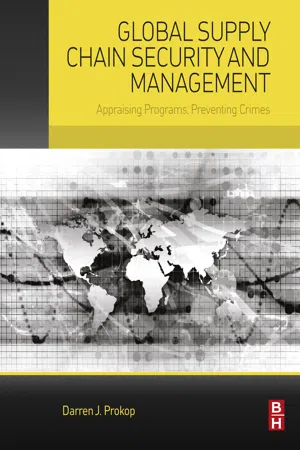One can find many definitions of the term supply chain management, each with varying complexity and usually at the expense of clarity. A good way to understand the term is to think of the linkages of two or more organizations managed in such a way so as the whole is more valuable than the sum of its individual parts. The organizations to be managed are usually independent firms but they can also be departments within an organization. The linkages themselves are usually contractual relationships but they can also be the result of mergers/acquisitions. In either case these involve negotiation and legal activities. Thus, supply chain management involves the setting up and the running of an organizational structure in order to achieve some strategic goal (e.g., profit maximization, cost minimization, increased market share, product development, etc.).
The term global supply chain management adds the dimension of international business into the mix. This raises issues of multinational operations, cross-cultural relationships, and a business space open to more risk (be it political or economic). A good way to understand the term is to consider the following question: What happens when an international border crosses one or more points along the supply chain? It turns out that quite a lot of things happen—even under normal circumstances. Supply chain management would be conditioned by differences in legal/contractual environments and trade barriers of various kinds. Of course, firms often find it necessary to expand their supply chain into other countries. This may be due to savings in labor cost, access to critical raw materials, or opening up new markets for goods and services. The constraints involved in cross-border trade are part of the transaction costs involved in this process. As this book discusses, securing the global supply chain and complying with government-mandated regulations are a part of these transaction costs.
Logistics Management
Supply chain management, in the simplest sense, is about organizational structure. Logistics is about flow within that structure. Here we mean the flow of people, material, information, money/credit, and finished goods both downstream and upstream along the supply chain in order to help facilitate the strategic goal of the supply chain.1 Logistics management is the art and science of dealing with the constraints of time, physical space, and location. It is helpful to think of supply chain management as a skeleton and logistics management as the set of organs and veins giving vitality (via blood and oxygen flow) to the former. This is truly a symbiotic relationship—supply chain management without a good accounting of logistics is to invite problems such as bottlenecks and late deliveries. At the same time, logistics without a sound supply chain structure in which to operate is to move things while, for instance, being locked in relationships that are not cost-effective, or to move things to where they are not most needed. In other words, logistics involves tactics which can help or hurt the supply chain strategy. And each may have to adapt to the other—logistics to fulfill the supply chain’s strategic goal or adjusting the strategic goal given the realities of logistics.
Time, physical space, and location. These terms introduce geography and infrastructure into the mix. This is where the rubber meets the road. The logistician and supply chain manager need to be aware of what is and what is not possible within the physical environment in which the logistics flow takes place. There are seven “rights” which logistics tries to deal with.
▪ Getting the right product …
▪ In the right quantity …
▪ And in the right condition …
▪ Delivered to the right customer …
▪ In the right location …
▪ And doing all this for the right price.
Any/all of these “rights” will not be fulfilled if account is not taken for how much time it will take to move something from point A to point B—or whether point A (B) is the right origin (destination) in the first place. Moving something from point A to B is dependent on the modes of transportation that are available, the nature of the geography separating them, and the quantity and quality of the infrastructure on which it takes place.2 Furthermore, moving across an international border is dependent on where the ports of entry are and how they are approached (i.e., which mode of transport is used).
To those who are not in the business of logistics (especially the transportation component) it is an invisible industry. In fact, we can say that if the general public does not think about logistics very much it is because the logisticians are doing a good job. For example, when a custom...
